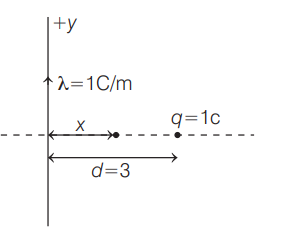Q. An infinite line of charge with uniform line charge density of $1\, C / m$ is palced along the $y$ -axis. A charge of $1\, C$ is placed on the $x$ -axis at a distance of $d=3\, m$ from the origin. At what distance $r$ from the origin on the $x$ -axis, the total electric field is zero. (Assume, $0 < r < d$ )
TS EAMCET 2019
Solution:
